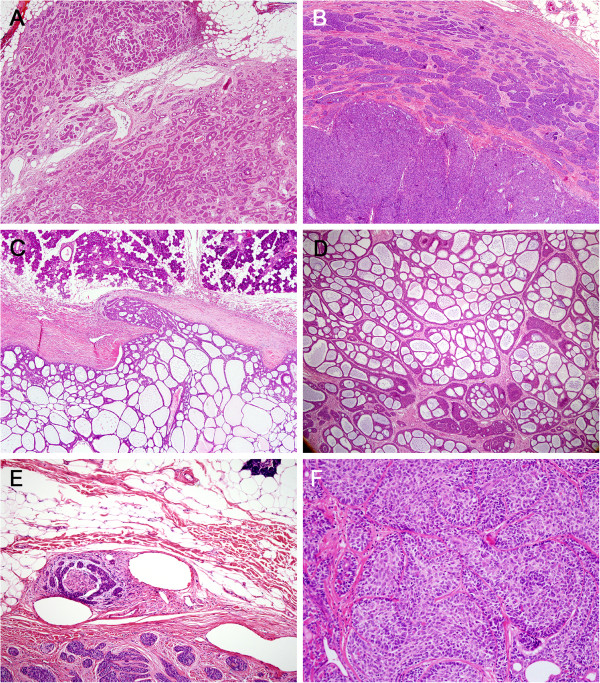Figure 1.
Histologic findings of basal cell adenocarcinoma and basal cell adenoma with capsular invasion. A. A basal cell adenocarcinoma that is unencapsulated and is invading into the adjacent fat. B. A basal cell adenoma with capsular invasion. Variably-sized solid nests are streaming from the solid component and are attenuating parts of the capsule. C. The cribriform variant of the basal cell adenoma with capsular invasion shows a focal tongue-like projection into the capsule. D. The cribriform pattern of the basal cell adenocarcinoma with capsular invasion mimics adenoid cystic carcinoma in that it presents with tumor islands with multiple holes. However, it does not show accompanying invasive nests with true lumina, which are seen in adenoid cystic carcinoma. E. A basal cell adenocarcinoma that exhibits invasive growth with associated perineural invasion. F. The solid form of basal cell adenocarcinoma. The tumor is composed of basaloid cells, which occur concomitantly with vague two-cell morphologies and some palisading at the periphery.

